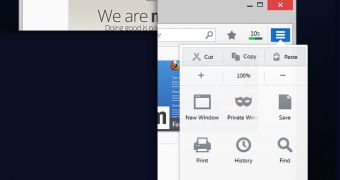Mozilla is still working on Australis, the huge Firefox UI revamp. It's been at it for more than a year, and it's going to take several more months before a Firefox with the Australis interface ships in the stable channel. But the team is getting ready for a wider release.
Up until now, the Australis interface has been in testing in a separate UX team branch of the Firefox source code. But the Australis code may soon be merged into Mozilla Central, i.e. the repository on which the official Nightly builds are based.
The move will signal that the project is stable and complete enough for wider testing, but it is very likely that it won't be ready to graduate to the Aurora channel after the few weeks it spends in Nightly.
Normally, when a feature is pushed back to another cycle, the code behind it still ships, but is hidden away behind an option in about:config. But Australis is too big of a change for this to work.
"Due to its large scope, Australis couldn’t be implemented with the ability to toggle its presence via an about:config preference. This unfortunately carries with it a more burdensome plan to undo the changes should there be issues that lead us to delay the release of Australis," Mozilla's Jared Wein explains.
"When Australis (currently located on the UX branch) merges to mozilla-central, the Australis team will manage a special project branch that mirrors mozilla-central but excludes the Australis changes. This branch is located in the temporary Holly project," he adds.
This repository will be identical to mozilla-central, apart from the Australis-specific code. In the event that Australis is pushed back to another release cycle, the Holly code is pushed into the Aurora channel. But this code will be largely untested, since Nightly users would have relied on the Australis version.
There shouldn't be too many problems but, just in case, Mozilla is asking the more curious of users to give this Holly version a try, when it becomes available, to spot any potential bugs early.

 14 DAY TRIAL //
14 DAY TRIAL //